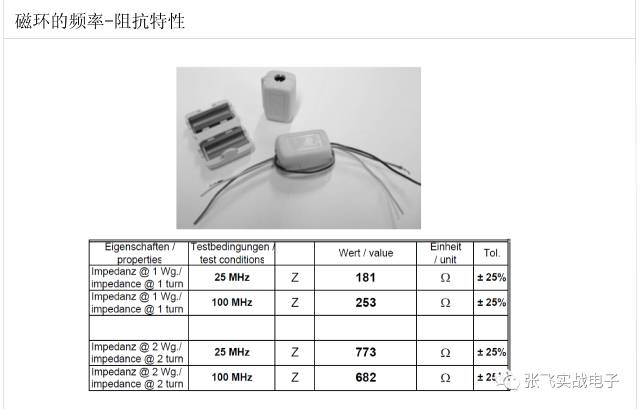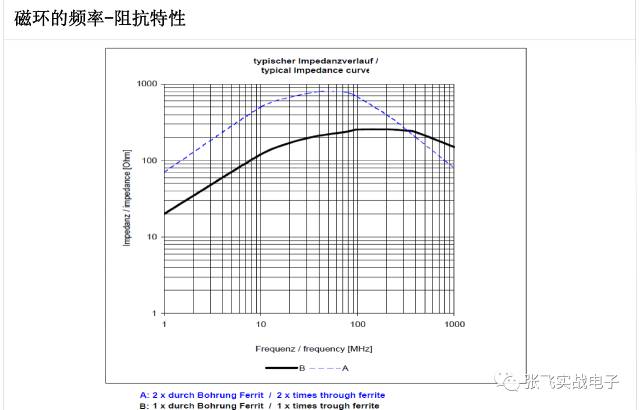Classification of common magnetic materials Common magnetic materials can generally be divided into three categories: metal magnetic powder cores, soft ferrite cores, Amorphous nanocrystalline alloy magnetic core. Magnetic material classification It is a metal soft magnetic material with uniform distribution of air gaps. Due to its relatively high saturation magnetic flux density, good temperature stability and mechanical shock adaptability, metal magnetic powder core materials are ideal materials for manufacturing inductive devices. Metal magnetic powder cores are subdivided into: 1. Iron powder core (including carbonyl iron) Iron powder cores: widely used in DC output chokes, input chokes with different modes, power factor correction inductors, continuous mode feedback inductors, dimming coil chokes and other emission and radio frequency interference devices. Carbonyl ferromagnetic powder core: has many excellent magnetic properties, high frequency high Q, high saturation magnetic flux density and high reliability performance. Mainly used for inductive devices that maintain high Q value in the range of 50kHz to 500MHz, and are widely used in radio and many communication fields. 2. High magnetic flux powder core High magnetic flux powder core: It has excellent magnetic and magnetic properties, low power loss and high magnetic flux density. When used in the temperature range of -55C~+125C, it has temperature resistance, humidity resistance, vibration resistance, etc. High reliability; at the same time, a wide permeability range of 60~160 is available. It is the best choice for switching power supply output chokes, PFC inductors and resonant inductors. It has high saturation magnetic flux density (15000 Gauss), and is especially suitable for working in occasions with high power density requirements. Fe-Si-Al powder core: It has excellent magnetic and magnetic properties, low power loss and high magnetic flux density. When used in the temperature range of -55C~+125C, it has high reliability such as temperature resistance, humidity resistance and vibration resistance; A wide permeability range of ~160 is available. It is the best choice for switching power supply output choke coils, PFC inductors and resonant inductors, and has a good price-performance ratio. Iron-nickel-molybdenum powder core: has excellent magnetic and magnetic properties, low power loss, high magnetic flux density, and has high reliability such as temperature resistance, humidity resistance, and vibration resistance when used in the temperature range of -55C~+125C; at the same time, 60 A wide permeability range of ~160 is available. It is the best choice for switching power supply output choke coil, PFC inductor and resonant inductor, with small power loss and stable temperature performance. Soft ferrite core: Made of nickel-zinc and manganese-zinc materials, it is used in high-frequency inductors, transformers, filters, etc., and is the most commonly used material in radio. Amorphous nanocrystalline alloy magnetic core: It has the advantages of high sensitive stress, high magnetic permeability, low ferromagnetic loss and good high-frequency characteristics, and has higher performance than conventional soft magnetic materials such as ferrite, silicon steel and permalloy. Cost-effective, widely used in modern communications, power electronics, electromagnetic compatibility, sensors and other high-tech industries and the replacement of various industrial magnetic devices, especially suitable for miniaturization, high-frequency and high-efficiency design of inductors and transformers. Common Magnetic Material Identification Common magnetic materials can be quickly identified by their surface coating color or characteristics: Magnetic material identification Iron powder hearts are available in three paint colors: (yellow/white), (blue/yellow) or (green/blue), (grey/yellow) carbonyl iron paint colors: (full yellow) or (blue/white) ) High magnetic flux paint color is: (all blue) iron nickel molybdenum paint color is: (all gray), (varnish) iron silicon aluminum paint color is: (all black) nickel zinc ferrite unpainted The surface is rough, easy to drop powder, and the color is gray. The unpainted surface of manganese-zinc ferrite is smoother, and it is not easy to drop powder. The color is dark. There is a clear difference in coating. Calculation of permeability of ferrite ring: 1. Measure the outer diameter D of the magnetic ring, the inner diameter d, and the height H of the ring, in mm. 2. Use the enameled wire to wrap around 10~20 turns, and wrap it tightly, not too loosely. Measure its inductance L, the unit is uH. The larger the inductance, the smaller the measurement error, the smaller the inductance, the larger the measurement error, please follow the actual needs. Determine the number of turns N to be wound. 2. Substitute the above data into the following formula to calculate the approximate permeability u0u0=2500*L*(D+d)/((Dd)*H*N*N) For example: 13X7X5 magnetic ring, make 20 turns, measure The inductance is 23uH, and it is substituted into the above formula to calculate u0=2500*23*(13+7)/((13-7)*5*20*20)=1150000/12000=95.8 The calculated result is the most consistent with the specification of permeability 100 Approaching, determine that the u0 of the magnetic ring is 100, note that the nominal error of u0 is generally + -10%. For a magnetic ring without parameters, you can first determine which material it is based on the appearance characteristics, and then measure the magnetic permeability to determine the main specifications of the magnetic ring. The role of magnetic materials 1. Coils with more than one turn are used to be called inductive coils, and coils with less than one turn (wires through the magnetic ring) are used to be called magnetic beads; 2. The inductor is an energy storage element, while the magnetic bead is an energy conversion (consumption) device; 3. Inductors are mostly used in power filter circuits, and magnetic beads are mostly used in signal circuits for EMC countermeasures; 4. Magnetic beads are mainly used to suppress electromagnetic radiation interference, while inductors are used in this regard to focus on suppressing conductive interference. Both can be used to deal with EMC and EMI problems; 5. Inductance is generally used for circuit matching and signal quality control. Magnetic beads are used where analog ground and digital ground are combined; 6. Magnetic beads have high resistivity and permeability, which is equivalent to the series connection of resistance and inductance, but the resistance value and inductance value change with frequency. It has better high-frequency filtering characteristics than ordinary inductors, and it is resistive at high frequencies, so it can maintain a high impedance in a relatively wide frequency range, thereby improving the effect of FM filtering; as a power filter, inductors can be used. . The circuit symbol of the magnetic bead is the inductance, but it can be seen from the model that the magnetic bead is used. In terms of circuit function, the magnetic bead and the inductance have the same principle, but the frequency characteristics are different; 7. The magnetic bead is composed of an oxygen magnet, and the inductance is composed of a magnetic core and a coil. The magnetic bead converts the AC signal into heat energy, and the inductance stores the AC and releases it slowly; 8. The magnetic beads have a great hindering effect on high-frequency signals. The general specification is 100 ohms/100mmHZ, and its resistance is much smaller than the inductance at low frequencies; 9. Ferrite Bead is an anti-jamming component that has developed rapidly at present. It is cheap, easy to use, and has a remarkable effect of filtering out high-frequency noise; 10. As long as the wire is passed through it in the circuit (I use all the ones that look like ordinary resistors, the wires have been passed through and glued, and there are surface mount forms, but they are rarely sold). When the current passes through the wire, the ferrite has almost no impedance to the low frequency current, but will have a large attenuation effect on the higher frequency current. The high-frequency current is dissipated as heat in it, and its equivalent circuit is an inductor and a resistor in series, and the value of both components is proportional to the length of the bead. There are many types of magnetic beads, and the manufacturer should provide technical specifications, especially the curve of the relationship between the impedance and frequency of the magnetic beads; 11. Some magnetic beads have multiple holes. Passing a wire through it can increase the impedance of the component (the square of the number of times passing through the magnetic bead), but the increased noise suppression capability at high frequencies cannot be as much as expected. It is better to connect several magnetic beads in series; ferrite is a magnetic material, which will cause magnetic saturation due to excessive passing current, and the magnetic permeability will drop sharply. High-current filtering should use magnetic beads specially designed in structure, and pay attention to its heat dissipation measures; 12. Ferrite beads can not only be used in power supply circuits to filter out high-frequency noise (can be used for DC and AC output), but also can be widely used in other circuits, and their volume can be made very small. Especially in digital circuits, because the pulse signal contains high-frequency harmonics and is also the main source of high-frequency radiation of the circuit, it can play the role of magnetic beads in this occasion; Flash Memory,Usb Flash Drive,Memory Stick,Usb Memory Stick MICROBITS TECHNOLOGY LIMITED , https://www.hkmicrobits.com
